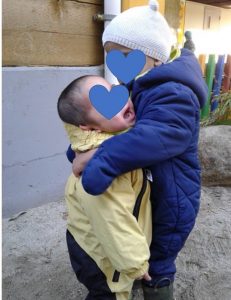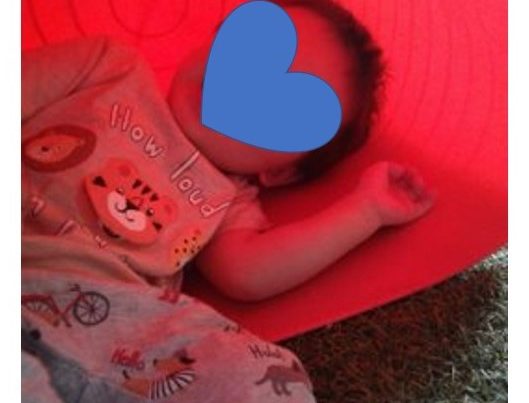
Morning hugs as a greeting
Toddlers usually observe and imitate what adults do and say, so modelling a good behaviour is very important. I also help children understand others’ perspectives and emotions by using keywords or short sentences to describe and emphasize how others’ are feeling. For example, if one child cries because he/she got hit by another one, I will describe the crying child’s feeling by saying “Ouch, that hurts! “ I’m not happy, sad” with a sad face to the other child. Shorter sentences or keywords help younger children understand more easily, when they grow a bit older, longer, more complex sentences can be introduced.
When children offer help to their peers I will praise them immediately by saying “Thank you so much for your help” and explaining how that makes the other child feel too: “You made him/her happy!”. This helps the children connect their positive behaviour with feelings and encourages children to be aware of others’ emotions. Even at 2 years old, our children already display empathy: When our little one “D” cried loudly because he had tripped, our older children went to him and gave him a big hug saying: “D” is not happy, he is crying.” This shows that not only did they understand what emotion D was showing, but also how to help him feel better.

Comforting a crying friend.
Sometimes children will also use a stuffed animal to help them talk about their feelings. One of our children showed us a perfect example:Our little boy “L” has a stuffy named “DogDog”. When he was putting the toppings on his felt pizza, he said that “Dog dog is hungry, and he needs to eat pizza!’. In general, developing empathy takes time, and can be shown in a variety of ways. Our children reminded us of that when they expressed their concern for one of the worms in the playground: When they saw a worm in the dirt, they got a stick and gently wiped the sand out of its body to make it clean, and then found a new home for it. I am really happy to be able to see our children growing their empathy and kindness daily, and use their creative minds to respond to situations in a positively.
For more information regarding our curriculum and other insights please visit our Facebook page.



